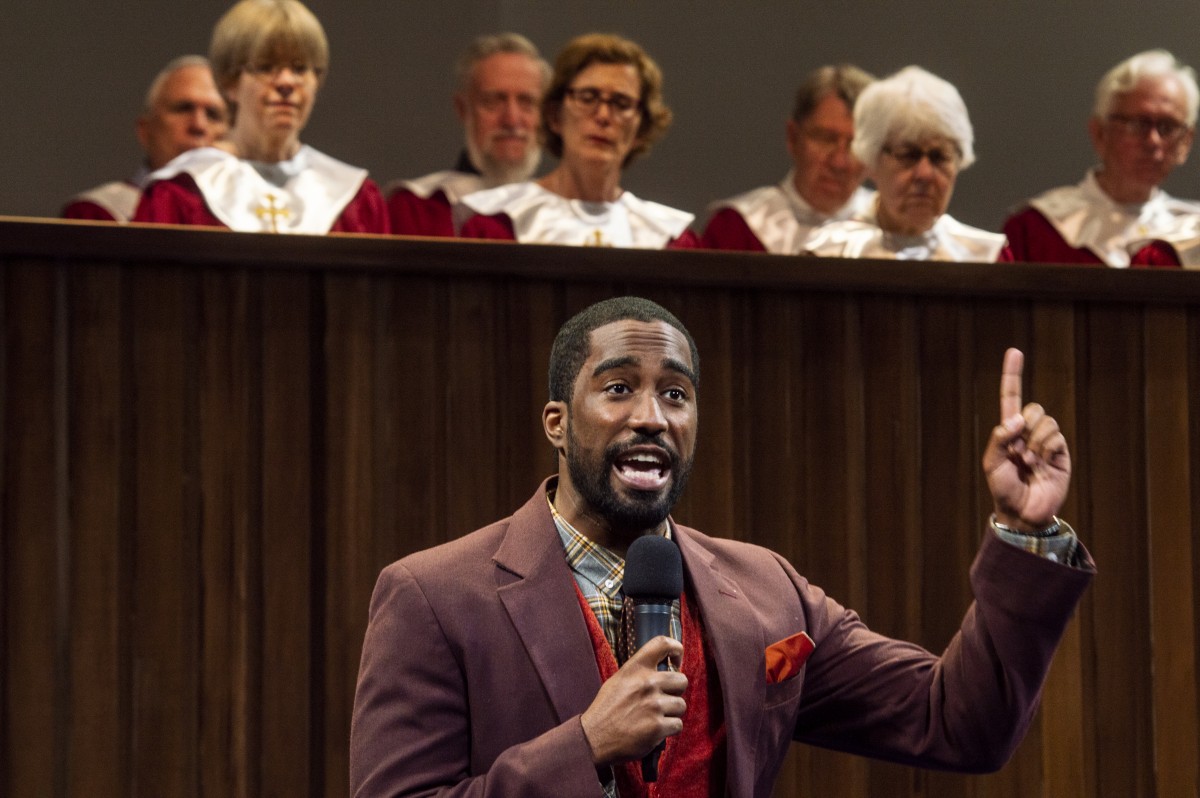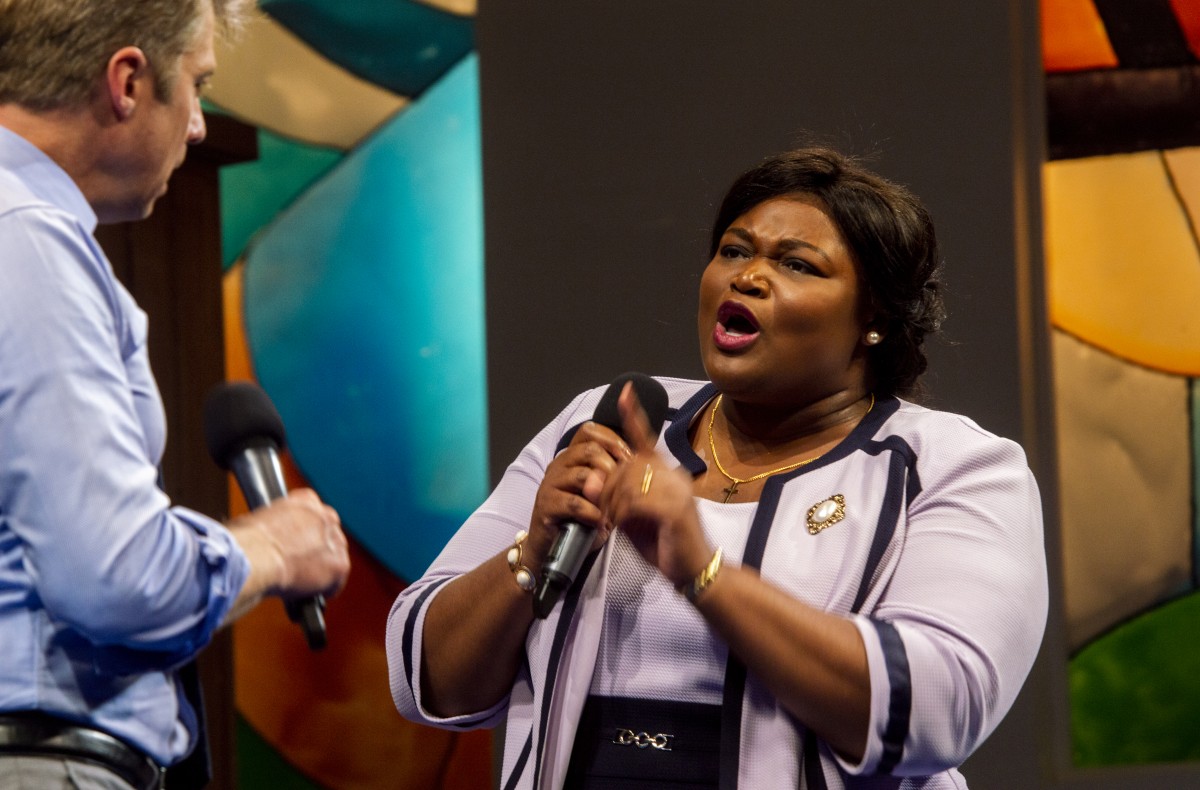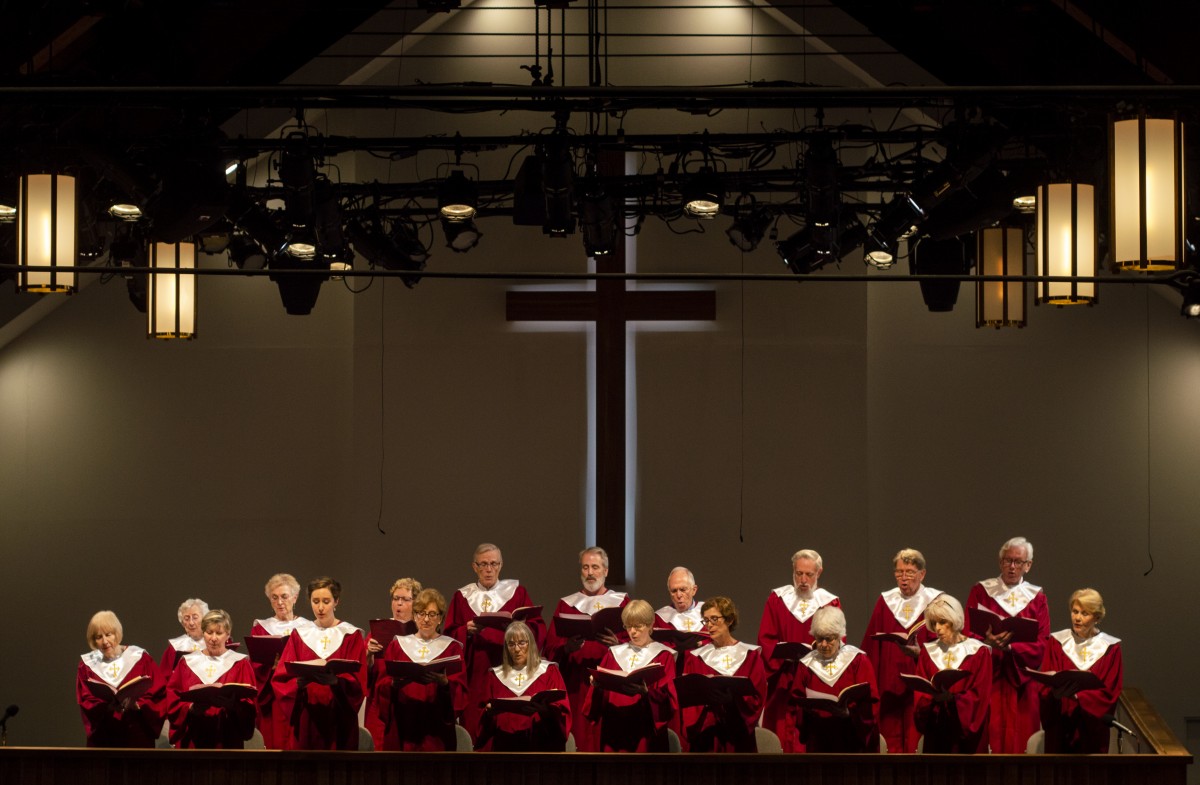Through the character of the pastor’s wife, Elizabeth, The Christians playwright Lucas Hnath describes the play’s main character, Pastor Paul, as “magnificent.”
And although Paul himself denies it, as he passionately entreats his congregation to follow him down the radical new path he’s chosen, gravitas and grandeur are undeniably a part of his character.
As the Chautauqua Theater Company took on bringing The Christians to Bratton Theater, costume designer Andy Jean tackled the task of making sure Paul, played by guest artist Jamison Jones, looked the part. The show runs through the weekend, with performances at 2:15 p.m. Wednesday, July 10, 4 p.m. Thursday, July 11 and Friday, July 12, and again at 2:15 p.m. Sunday, July 14 in Bratton Theater.
“Costumes are the immediate signifier of so many things about a character,” Jean said. “For this show, people are presenting their best selves, and we wanted their clothes to reflect that presentation.”
Jean said the first goal for designing costumes for The Christians was to make the characters appear realistic and grounded. Making sure that, alongside the set design, the clothing matched the church setting was important for creating the world of the play.
After that, however, Jean was able to dig into the details of each character’s outfit to determine what the subtleties of their clothing said about them. According to Jean, each character’s dress was important to signify both their level of affluence and confidence.
For example, when Paul first informs the church of the dramatic crisis of faith he has encountered, he’s sharply dressed in a crisp gray suit with a bright blue shirt underneath. By comparison, the character of Associate Pastor Joshua, played by conservatory actor Ricardy Fabre, is more subdued in brown and navy blue clothes, as his confidence is shaken by Paul’s sermon.
“The choices were very specific in signifying ranking within a scene, especially between Joshua and Paul,” Jean said. “They have very different roles, and it was important to convey that through what they were wearing.”
As the church is rocked to its core, the clothing changes to reflect the tumultuous turn of events.
Elizabeth sheds her prim, pink pantsuit in favor of more relaxed, everyday clothing as she pulls away from the church.
Paul, proper and put-together at the beginning of the play, slowly unravels as the weight of his actions presses down on him. Over the course of the latter half of the show, he loses his suit jacket, rolls back his sleeves, takes off his tie and ruffles his hair, turning the once-proud pastor into a wrinkled wreck.
Joshua returns after being ejected from the congregation, still dressed in a suit and tie, but in contrast to the now-disheveled Paul, his confidence is all the more obvious.
“I wanted the audience to understand that, at the end of the day, these characters are people, they’re humans,” Jean said. “Things affect them. Through the small details, especially for Paul, their humanity comes out.”
Jean said that at any point in the play, characters should be presented as alive and active; people the audience can engage with and relate to in order to better connect with the show’s messages.
“Because this play brings up so many wonderful questions, we want the audience members to feel like there’s no disconnect,” Jean said. “We want them to be a part of that conversation.”








